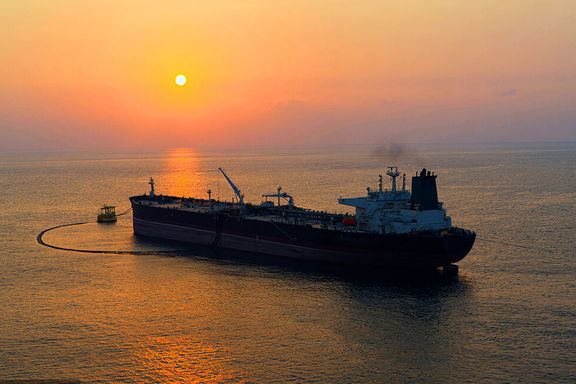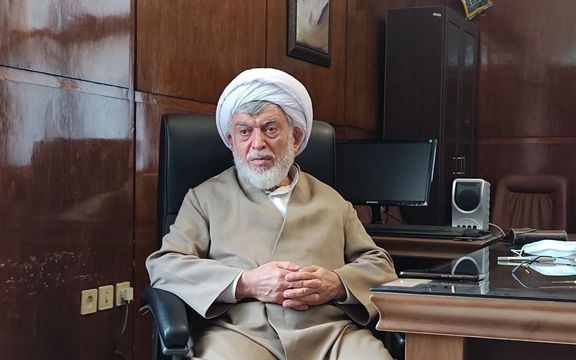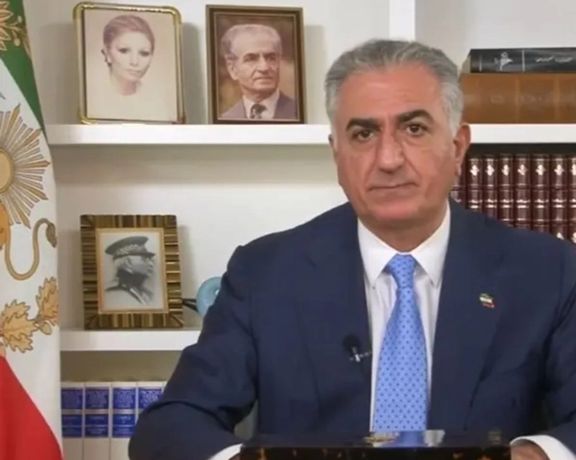Iran Says Oil Exports Steady As Production Slightly Increased

Iran says its oil production in June increased by 31,000 barrels a day, rejecting reports that Russia has taken market share, shipping more oil to China.

Iran says its oil production in June increased by 31,000 barrels a day, rejecting reports that Russia has taken market share, shipping more oil to China.
The government’s office news website IRNA said Tuesday that the latest OPEC monthly report shows that Iran produced 2,574,000 barrels per day in June, slightly higher than in May.
Kpler, a market intelligence firm reported in June that Iran’s oil shipments had halved in May due to Russian competition after many countries boycotted imports from Moscow after the invasion of Ukraine. Other reports said that more than 30 million barrels of Iranian oil remained unsold in Asia.
IRNA highlighting the small increase in production has rejected these reports saying that despite US sanctions on Iran’s oil exports sales continue.
However, the impact of Iran’s illicit oil exports is not felt in Tehran’s financial markets where the currency, rial is close to its all-time lows and the government this week failed to pay monthly cash handouts to fixed-income Iranians.
Amid its economic crisis the hardliner government of President Ebrahim Raisi tries to present the overall situation in a positive light as it refuses to make a deal with the United States over limiting its nuclear program in return for the lifting of sanctions.
OPEC overall increased oil production by 234,000 barrels per day in June.

Iran International has learned that Iran’s satellite carrier rocket Zoljanah exploded after launch despite Tehran’s claim of its recent successful test-launch.
According to information obtained from western sources by Iran International, the hybrid-propellant satellite launcher that was tested for the second time on June 26 did not even manage to cover half of its intended path to orbit.
The suborbital Satellite Launch Vehicle (SLV) is currently at the experimental stage and was not carrying any satellite during the test-launch, the source said, adding that the Islamic Republic is yet trying to have a truly successful launch before it would mount a satellite on it. Iran claims that Zoljanah can carry satellites weighing up to 220 kilograms into an orbit 500 kilometers above the Earth.
Defense Ministry spokesman Ahmad Hosseini had claimed that "the third stage of the development of this satellite carrier has started thanks to data -- or telemetry – collected from this launch."
The three-stage Zoljanah (Zuljanah) satellite launch vehicle, which has two solid propulsion phases and a single liquid propulsion phase, was test-fired at a desert launch pad at Imam Khomeini Space Center southeast of Semnan, the site of frequent recent failed attempts. It is Iran’s third SLV after the Safir and Simorgh, the latter of which has failed five times in a row. A fire at the Imam Khomeini Spaceport in February 2019 also killed three researchers.
However, Iran’s Revolutionary Guard in April 2020 revealed its own secret space program by successfully launching the Noor, or Light, satellite into a low orbit circling the Earth. The IRGC launched its second reconnaissance satellite into space this March at another site in Semnan province. State media said that the Noor-2 satellite reached a low orbit of 500 kilometers above the Earth’s surface on the Qased – or Messenger -- satellite carrier, also a three-phase, mixed-fuel space launch vehicle.
The United States says that space launches by Iran defy UN Security Council resolution 2231 and could be a cover to develop intercontinental ballistic missiles that would be able to deliver nuclear warheads. The US intelligence community’s 2022 threat assessment, published in March, claims such a satellite launch vehicle “shortens the timeline” to an intercontinental ballistic missile for Iran as it uses “similar technologies.”
Resolution 2231 in 2015 formalized the nuclear agreement between Iran and world powers known as the JCPOA. It banned missile technologies capable of delivering nuclear warheads.
Expressing concern about the launch, a Pentagon spokesman US Army Major Rob Lodewick, said the American military “will continue to closely monitor Iran’s pursuit of viable space launch technology and how it may relate to advancements in its overall ballistic missile program.”
Zoljanah is named after the horse of third Shiite imam Hussein, the grandson of Prophet Muhammad. The satellite carrier is 25.5 meters long and weighs about 52 tons. It utilizes a 1.5-meter diameter solid fuel engine with 74 tons of thrust.

An Iranian banking official says enforcing newly ordered strict dress code – or hijab – restrictions on clients will result in banks losing customers.
Mohammad Reza Jamshidi, the secretary of the Association of Private Banks and Credit Institutions, said on Tuesday that “when bank branches want to force out customers who have not observed the desired form of hijab, or do not allow them to enter,” they are bound to lose clients. “They will not even open an account there,” he said.
He added that these new conditions and restrictions have been ordered just a few days ago so “we should wait to see the consequences.”
These issues have caused some people not to accept the position of the manager of the branch and opt to become the deputy head as the branch manager will be accountable for all the responsibilities.
In the past few weeks, authorities have launched an extensive campaign against women they call ‘bad-hijab’. In addition to crackdowns by the ‘morality police’ on streets, some officials have ordered extra measures, including to government offices, banks, and public transportation authorities to withhold service to ‘bad-hijab’ women.
In the jargon of religious and political hardliners women who are unwilling to wear the hijab and display their displeasure by wearing small and colorful headscarves with tight-fitting, short dresses are called ‘bad-hijab’ ones.
Meanwhile, social media posts from Iran indicate many women left home Tuesday without hijab in response to calls from activists to defy the government’s forced dress code.

A cleric who has long been a top judge in Iran has acknowledged that the Islamic Republic massacred political prisoners in the summer of 1988.
Hossein Ali Nayeri, one of the judges who was reportedly involved in the summary trial and execution of thousands of Iranian prisoners, defended his action in an interview with the Islamic Republic Documents Center (IRDC) a government entity that collects the history of the 1979 revolution and more than four decades of rule by the Islamic Republic in Iran.
Nayeri is currently the chairman of the Disciplinary Court for Judges in the Islamic Republic, a supervising body that monitors and controls the performance of judges in Iran.
He tried to justify and explain away the killing of thousands of political prisoners, saying: "It was a special situation. The country was in a critical state. If Khomeini [the Islamic Republic's first leader] did not stand firm, we would not have the security we are enjoying today. Perhaps the regime would have not been able to survive. Some 50 to 60 people were assassinated in Tehran and other Iranian cities daily."
Nayeri was referring to hundreds of assassinations from 1981 when MEK was targeting clerics and officials of the Islamic Republic.
In the interview, Nayeri also shed light on the life of the Islamic Republic's first Revolutionary Court Chairman Ayatollah Mohammadi Gilani, who is known for his ruthless treatment of prisoners. Nayeri recalled that Gilani used to say that the revolutionary court's rulings came from God Almighty, "and he would never make any compromise when the order came from God," Nayeri said.

"The critical situation at that time called for strict treatment. We could not run the country by being too soft," he added.
Asked why prisoners who were serving jail sentences or had already served their prison terms were killed, Nayeri said that was because the prisoners conspired against the Islamic Republic.
Nayeri also talked about the rumors that Gilani handed down death sentences for his own sons in the 1980s. Nayeri said the Ayatollah's sons were with the Mujahedin-e Khalq, aka the MeK. He added that Gilani's sons never ended up in jail as they were killed during clashes with security forces in the streets. Asked how Gilani reacted to the killing of his sons, Nayeri quoted him as saying, "I am not even allowed to cry for my children." Nayeri added that Gilani's two sons had long abandoned the family and went their separate ways.
He said that there were a couple of assassination attempts on Gilani but every time he miraculously escaped death.
Speaking about another juncture of the history of the Islamic Republic, Nayeri said that Gilani was a devotee of Khomeini and was one of the supporters of Ali Khamenei when the Assembly of Experts met in June 1989 to choose a new leader for the Islamic Republic after Khomeini's death. He said that both Khomeini and Khamenei always valued Gilani's judgement.
Nayeri was a member of the "death committee" that sentenced political prisoners to die. Iran’s current president, Ebrahim Raisi was also a member of the group. A witness in the Swedish trial of an Iranian over his alleged role in the 1988 prison executions in mid-December 2021 named President Ebrahim Raisi as one of the officials directly involved in the massacre.
In a recent development, Prominent former UN officials have called for a UN investigation into the 1988 "massacre" of political prisoners in Iran, including the role of President Ebrahim Raisi, at that time.

Russia’s Vladimir Putin will visit Tehran next week for talks with Iranian and Turkish leaders within the Astana mechanism related to Syria, Kremlin spokesman Dmitry Peskov said Tuesday.
However, an Iranian lawmaker said that Putin is scheduled to visit Iran to follow up on the plans to further economic cooperation.
The head of the Iranian parliament's economic committee, Mohammad-Reza Pourebrahimi, said on Tuesday that planning for the expansion of economic ties between Tehran and Moscow will be on the agenda of the talks between the two presidents.
Noting that Russians are now more keen on economic collaborations with Iran than in the past, referring to the restrictions imposed on Moscow over its invasion of Ukraine. “The sanctions on Russia by the US and Europe made it more and more in need of economic cooperation with Iran.”
After the 16th meeting of the Astana process in Kazakhstan's capital Nur Sultan in July 2021, Turkey, Russia and Iran pledged to maintain cooperation in Syria to bring the warring sides together to find a permanent solution to the decade-long war.
Initiated by Turkey, Iran and Russia, the Astana meeting is focused on the constitutional system, political transition, security and resettlement. The first Astana meeting was held in Turkey in January 2017 to facilitate United Nations-sponsored peace talks in Geneva.
Late in June, Raisi and Putin held a meeting during their visit to Ashgabat, the capital of Turkmenistan, on the sidelines of the 6th summit of the heads of state of the Caspian Sea littoral states.
US National Security Adviser Jake Sullivan said Monday that Russia wants to obtain hundreds of drones from Iran, both for surveillance and attack, to use in its war in Ukraine.

Iran's exiled Prince Reza Pahlavi says as long as Iranian women are not free, Iran will not be free, calling on men to be in the front lines in this struggle to support women.
In a tweet on Monday, Pahlavi highlighted “43 years of Iranian women’s fight to reclaim their obvious and basic rights,” especially the freedom to choose what to wear.
“Iranian men should also stand shoulder to shoulder with women in the front lines of this struggle,” he added in his post that ended with a hashtag to support Iranian women who are protesting against the compulsory Islamic dress code or hijab.
Social media posts from Iran indicate many women left home Tuesday without hijab in response to calls from activists to defy the government’s forced dress code.
Women’s rights and political activists had called for civil disobedience on July 12 with the hashtag of ‘No2Hijab’ in response to a government announcement for a day of ‘hijab rallies’ at stadiums and other venues “to honor, celebrate, and promote” the Islamic notion of the hijab (cover) for women.
For the past few weeks the government has increased harassment of women for their insufficient hijab and many have been detained by special police patrols. This has led to more tension amid economic hardship for 90 percent of the population on fixed income, while inflation has reached 55 percent and food prices have risen by more than 80 percent, according to May-June official reports.